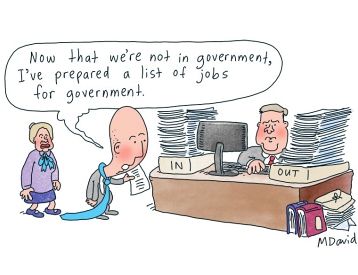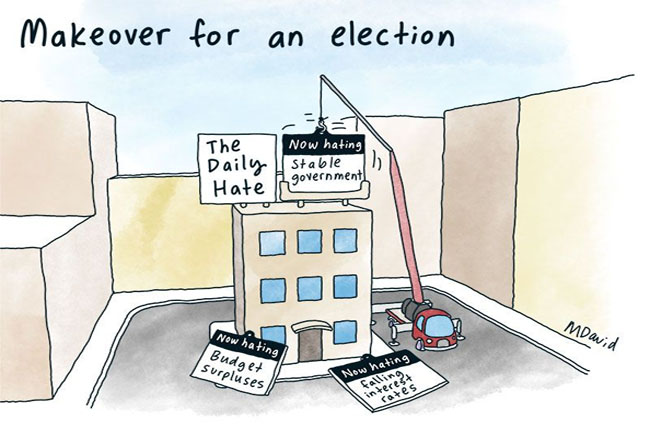Treasurer Jim Chalmers’ headline budget outcomes are impressive, but the hidden numbers are more significant, reports Alan Austin.
*Also listen to the audio version of this article on Spotify HERE.
LAST WEEK'S FINAL Budget Outcome for 2022-23 provided encouraging news for disadvantaged Australians in both the positive key results and in the buried details. It just might allay concerns about the controversial stage three tax cuts.
Turnaround in just one year
Having won office at the May 2022 Election, the Albanese Government was responsible for the economy throughout the financial year, July 2022 to June 2023. New Treasurer Dr Jim Chalmers substantially shifted several of the settings left by the previous Treasurer, Josh Frydenberg, arguably the least capable occupant of that role ever.
These are the principal outcomes:
- The budget surplus was $22.1 billion, up from a deficit of $31.9 billion in the previous year. That $54 billion improvement was by far the best turnaround since records began in 1970, both in dollars and as a percentage of GDP;
- Government spending was cut to 24.8% of GDP, down from the all-time high of 31.4% two years ago;
- Net debt at June 2023 was $491 billion, an improvement of $24.6 billion over the level of $515.6 billion in June last year;
- Gross debt this June was $889.8 billion, an annual recovery of $5.5 billion;
- Government sector net worth has improved from a disastrous negative $725.2 billion two years ago to negative $538.4 billion in June;
- Exports rose impressively through the year, with strong lifts in both tourism and education exports;
- Australia’s trade balance remained above nine billion dollars for the entire year, for the first time ever. This was close to the best trade outcome in the world.
Adverse global conditions
Delivering such dramatic improvement in the budget position is all the more remarkable given global conditions. Most developed economies have been whacked by flow-ons from the war in Ukraine, surging inflation, rising global interest rates, energy shortages and China’s slowing economy.
In this year’s June quarter, 15 of the 38 OECD members recorded negative or zero GDP growth. That contrasts with just five in June 2022. At the end of June this year, four developed economies were in full recession, compared with one a year earlier.
Treasurer Chalmers has achieved these outcomes via a combination of a healthy labour market, wage growth, higher tax receipts due to strong commodity prices, cuts to wasteful government spending, ending the Coalition’s rampant rorts and renewed signals from the Government via the Taxation Office that tax cheats will be punished.
Record jobs outcomes
During the 2022-23 financial year, the number of Australians with jobs clicked over 14 million for the first time, as the employment-to-population ratio reached an all-time high of 64.55%.
The jobless rate hit an all-time low of 3.42%, youth unemployment fell to 9.28%, the lowest on record, and the underutilisation rate fell to 9.34%, the lowest since 1982.
Australia’s jobless rate at the end of June ranked ninth in the OECD, the highest ranking since the last quarter of the Gillard Government in 2013.
Hidden outcomes
To all who believe taxation is essential, must be equitable in its burden, and that the Coalition’s rorts over the preceding eight years must stop, these budget outcomes are encouraging.
Corporations contribute to the tax take mainly through company income tax, fringe benefits tax, superannuation fund taxes and the petroleum resource rent tax. The total of these ranged between 24% and 27% of total taxes collected during the previous Rudd and Gillard Labor period. This then declined sharply as the Coalition allowed rampant corporate tax evasion, falling to just 20.7% in 2015-16. The Albanese Government has restored this to a much healthier 27.9%.
The goods and services tax, which is regressive – that is, impacts low-income citizens more than high-income – has fallen substantially as a percentage of total taxes collected. This ranged between 14% and 15.9% through the Coalition period. It is now down to just 13.6%, the lowest on record.
Regressive indirect taxes overall have declined to 22.8% of all tax revenue. The range between 2014 and 2019 under the Coalition, pre-COVID, was 25.6% to 28.3%.
The total tax take relative to GDP was 25.7%, pretty much where it should be for a federal government wanting to improve services, fund the states adequately and repay the horrendous debt stacked on by the incompetent Coalition. (We are talking real world here. We can note the objections to this analysis from the Modern Monetary Theory brigade and debate them elsewhere.)
The stage-three tax cuts
Taxation receipts from all wage and salary earners came in at 49.3% of all taxes. That is higher than the average contribution through the Rudd/Gillard years, which was 46.8%, and marginally lower than the Coalition’s average of 50.2%.
Given this, and given the strong surplus and prospects for future surpluses, there is now scope to implement the controversial stage three tax cuts without damaging the budget unduly.
The budgetary impact of the tax cuts – promised by both sides before the last election – now seems a lower political risk than being condemned by the Opposition, the anti-Labor mainstream media and the powerful conservative institutions for breaking solemn commitments.
The case remains strong, however, for an overhaul of the entire tax system to stabilise the budget and iron out the remaining inequities.
*This article is also available on audio here:
Alan Austin is an Independent Australia columnist and freelance journalist. You can follow him on Twitter @alanaustin001.
Related Articles
- Questions for the Treasurer on his early Intergenerational Report
- Chalmers’ fantasy of making a ‘better’ capitalism is absurd
- Chalmers’ challenge just got a whole lot scarier
- New Treasurer sets cracking pace on chasing foreign tax cheats
- Treasurer Chalmers bemoans nation’s debt but must act now
 This work is licensed under a Creative Commons Attribution-NonCommercial-NoDerivs 3.0 Australia License
This work is licensed under a Creative Commons Attribution-NonCommercial-NoDerivs 3.0 Australia License
Support independent journalism Subscribe to IA.














